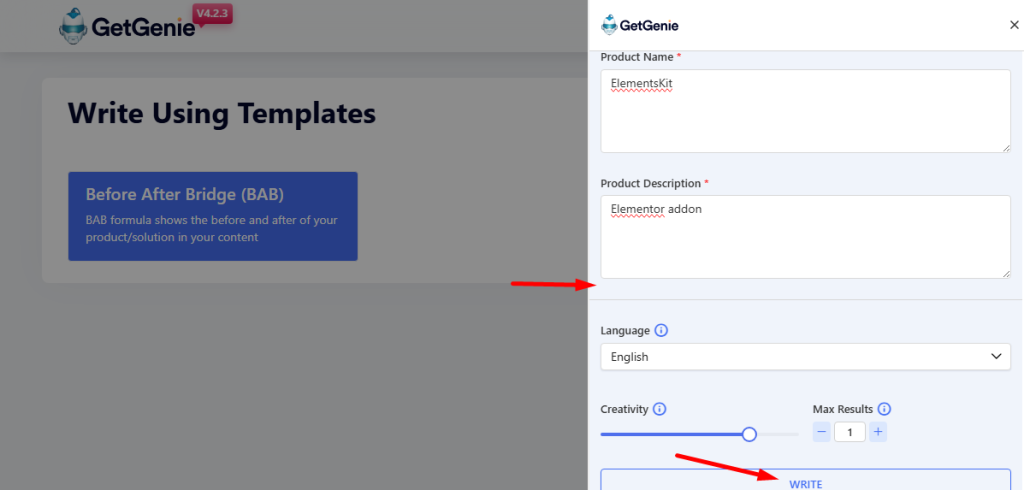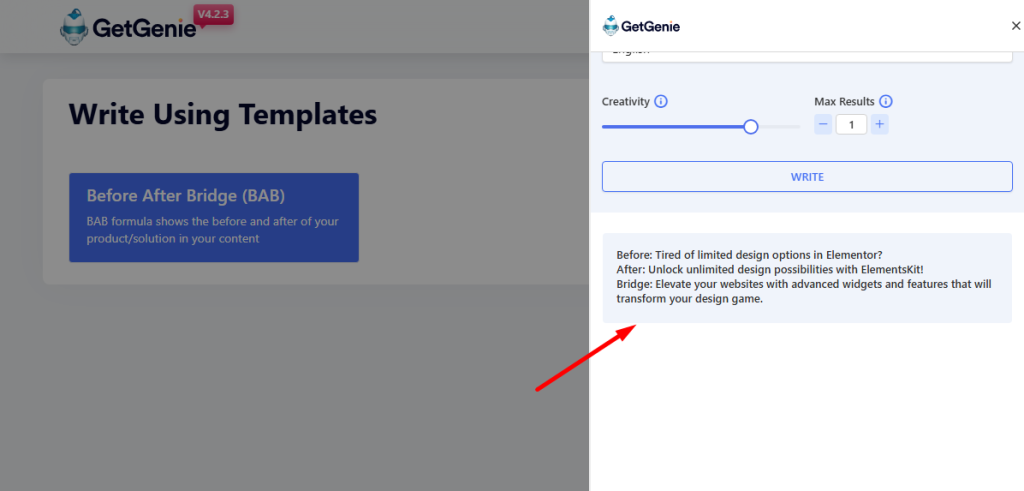How to Write People-First Content & Also Rank Higher

Google has made one thing clear: helpful, people-first content is the foundation of long-term search visibility.
Algorithm updates continue to reward pages that genuinely solve reader problems. The era of writing content solely for search engine algorithms is over.
The future of SEO requires you to align your strategy with Google EEAT. But you have to execute it entirely through a people-first lens. This guide shows you how to master this balance.
Understanding People-First Content
People-First Content is content created primarily to help and satisfy the human reader, rather than just optimizing for search engines. Its main goal is to deliver an immediate, comprehensive solution to the user’s problem.
It uses natural, easy-to-understand language that is easy to read and scan. Crucially, it avoids unnecessary filler text, jargon, or content used only to hit a word count.
Decoding Google’s EEAT Framework
EEAT – Experience, Expertise, Authoritativeness, and Trustworthiness.
EEAT is not an algorithm; it’s a standard used by Google’s Quality Raters to assess the value and credibility of content. Let’s understand what each element says:
- Experience (New E): Does the content demonstrate first-hand usage or direct experience? This is about showing you’ve actually used the product, visited the location, or performed the process in your content.
- Expertise (E): It checks if the author is knowledgeable and skilled in this field. This is the depth of know-how behind the writing.
- Authoritativeness (A): It looks at whether the site or author is recognized by other experts in the field and holds a strong professional reputation. This is about being cited and linked to by trusted sources.
- Trustworthiness (T): Is the content accurate, transparent, and legitimate? This is the most critical factor, covering data accuracy, security, and site reliability.
EEAT is vital and directly impacts your overall visibility in search results.
How to Write People-First Content for Better Ranks
This is the time you must shift from writing for search engines to writing for real humans. That means prioritizing clarity, accuracy, originality, and usefulness above keyword tricks or SEO shortcuts.
Understand People-First Content
People-first content is the practical application of high EEAT standards. It defines, your content should be written to genuinely help, inform, or entertain the human reader first, without using low-quality SEO tactics.
Google’s Actualización de contenido útil specifically targets sites where the content appears to be primarily made for ranking rather than helping people.
Key traits of people-first:
- It immediately and comprehensively solves the searcher’s problem.
- It uses natural language and is easy to read and scan.
- It avoids excessive jargon and filler text used only to hit a word count.
- It demonstrates deep, original understanding, not just aggregated information.
Suppose your keyword is ‘how to clean a burnt pot quickly’.
So you may craft content like this: To immediately clean a pot with burnt food stuck to the bottom, fill the pot with just enough water to cover the burned area. Then you have to add about a half-cup of baking soda and a squirt of dish soap. Bring it to a boil for ten minutes, and the burnt bits will lift right off with minimal scraping. This happens because the high heat, combined with the mild alkaline powder and soap, creates tiny bubbles that break the chemical bond between the carbonized (burnt) food and the metal.
However, for a stubborn pot, you can use white vinegar instead of soap to boost the fizzing reaction, a trick that works better than any heavy scrubbing or abrasive sponge.
Let’s see why it’s a people-first content: This example is people-first because it immediately solves the searcher’s problem by giving a quick solution in the first sentence (Trait 1). It uses natural, simple language like ‘squirt of dish soap’ and is formatted as a single, clear instructional sentence (Trait 2). It also avoids any unnecessary history of cleaning or filler text (Trait 3).
Most importantly, it demonstrates a deep, original understanding by explaining the ‘why’, that the combination creates bubbles that break the ‘chemical bond’ between the burnt food and the metal. It also offers the unique, expert trick of substituting vinegar for stubborn pots (Trait 4).
Apply First-Hand Experience (The New E)
This is where you move beyond simple research and prove you were there. Let’s learn how –
- Show, don’t tell: If you think something is good, you shouldn’t just say it’s good; rather, you should show how it’s good, like how it solves problems or needs. Suppose you’re explaining a before-and-after condition, consider writing like this:
- Antes: John spent 45 minutes coding a simple lead-capture form.
- Después: With Metform‘s drag-and-drop interface, he built the same functional form, including payment integration, in just 7 minutes.
However, to craft such examples, you can take help from any good asistente de escritura de IA for faster output. For example, the GetGenie IA offers a Marco BAB.
From your WordPress, you have to go to AI Writing under GetGenie. Then, find the BAB framework from the AI writing templates.

Just fill up the input fields and click on the Write button.

Here is your BAB output ready. Use it or regenerate it again based on your preferences. It’s easy!

Also, to improve your content and instead of relying on references, stock photos, or manufacturer descriptions, you must use original images, custom screenshots, or unique data charts.
- Integrate real-world context: It means you should give real examples from personal experience, companies, or share scenarios, etc. For ‘how-to’ guides, consider including notes on common troubleshooting issues you faced personally.
For example, instead of saying ‘This popup builder plugin is easy to use,’ you might say: ‘I installed the popup builder plugin and created a test popup in under five minutes; it worked perfectly on desktop and mobile.’ - Acknowledge limitations: Providing a balanced view is important. So, add the downsides, mention genuine experience. It helps to build immediate trust.
Build Expertise and Authority (E & A)
True expertise and authority are earned, not claimed!
If your topic is SERP analysis, then ask yourself, have you done it? Don’t write ‘Análisis SERP is useful,’ do it yourself, then you may write, ‘When analyzing SERPs, I examine top-ranking pages for keywords, content structure, and backlinks to identify opportunities to outrank them.’
Also, try to ensure every article features a detailed author bio that clearly establishes your professional experience and credentials. It’s good to link out to your LinkedIn or portfolio.
Another point is that Google values citations and links to high-authority external sources. Such as academic studies, government data, or reputable industry publications. You should practice it whenever you make a factual claim.
PRO Tips:
Person o organization schema: This is a type of structured data markup you may add to your website’s code. It uses a standardized format (JSON-LD, Microdata, or RDFa) that helps machines like Google’s crawlers to perfectly understand. So, you can now explicitly tell Google who the experts and authors are. It reinforces EEAT at the code level.
If the author is Jane Doe, check the example:
JSON
<script type="application/ld+json">
{
"@context": "https://schema.org",
"@type": "Person",
"name": "Jane Doe",
"url": "https://example.com/author/janedoe",
"jobTitle": "Lead Content Strategist",
"sameAs": [
"https://linkedin.com/in/janedoe",
"https://twitter.com/janedoe"
]
}
</script>Create content hubs: This is another trick to earn people’s trust. Here you can build robust internal linking structures that connect all your related articles, positioning your entire site as the central authority on a given topic.
Imagine your central topic is ‘SEO Basics’.
| Page Type | Tema | Linking Structure |
| Main Page (Hub) | Ultimate Guide to SEO | Links to ALL 3 Cluster Pages |
| Cluster Page 1 | What is JSON-LD Schema? | Links back to the main page |
| Cluster Page 2 | Guide to Keyword Research | Links back to the main page |
| Cluster Page 3 | How to Optimize Images | Links back to the main page |
By linking all these pages together, you signal to both people and Google that your site is the comprehensive, central authority on everything related to SEO.
Enhancing Trustworthiness (The T Factor)
Trustworthiness is the glue that holds EEAT together and is often measured by user satisfaction. Here are some tips to enhance trustworthiness –
Be transparent
It is highly recommended to have clear publication and update dates on your articles. Also, be sure to clearly label any sponsored or affiliate content. Doing so builds audience trust and adheres to necessary legal and SEO disclosure standards.
Prioritize accuracy
Readers and search engines always appreciate accurate information. Having a clear editorial or fact-checking process is crucial. Do not publish until all data and statistics are double-checked against reliable sources.
Optimize for user signals
It’s simple; if people trust your stuff, they’ll hang out longer. So, focus on increasing Time on Page and reducing Bounce Rate by making your content deeply engaging and satisfying.
How to Write & Format for Both (People & Google)
I’ve made this checklist for you. Follow it to ensure every piece of your content meets both Google’s standards and your readers’ needs:
- Readability first: Use short paragraphs of 2-3 sentences. Keep clear section headings and bulleted lists to break up text. It helps readers in easy scanning.
- Match intent instantly: Your title and opening paragraph must immediately and precisely match the user’s core search query.
- Add original value: Before publishing, ask: ‘What unique perspective, insight, or original data does this article add that the top 10 results are missing?’
- Flawless experience: This is the last but vital one. Don’t forget to check that your content loads quickly and is perfectly formatted on all devices, especially mobile, for maximum accessibility.
For better clarity on the new EEAT framework, check this guide by Google: Creating helpful, reliable, people-first content
Moreover, you can always take advantage of an AI writing assistant to write and improve your content. The Generador de blogs con un solo clic GetGenie Ai is super popular. Watch the video and learn how easy it is to craft a people-first content with GetGenie AI.
Conclusión
Achieving high E-E-A-T is not a hack; it’s a commitment to your audience. Here is the summary for you –
- Craft unique and easily understandable content.
- Earn trust by showing first-hand evidence.
- Address even the subtle, unanticipated questions an expert user might have, leaving no information gaps unanswered.

